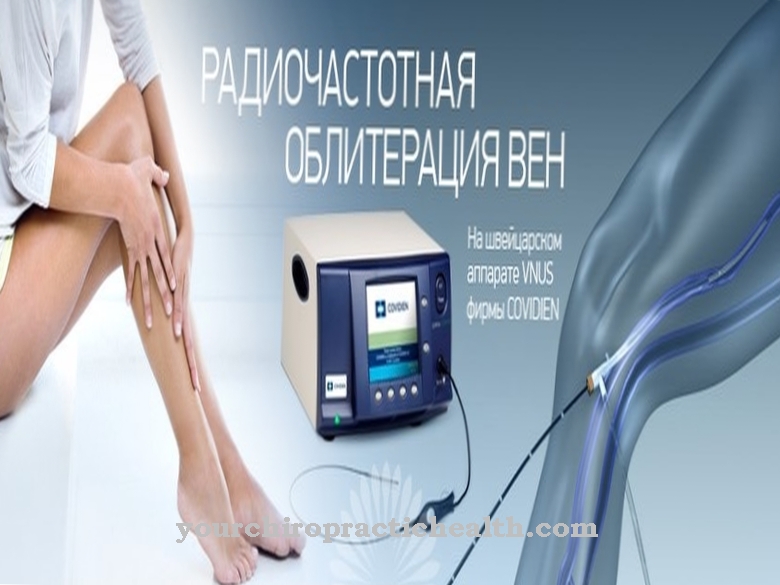The Progressive muscle relaxation is a relaxation technique that was developed by the American doctor and physiologist Edmund Jacobson. It is also known as "Jacobson progressive muscle relaxation".
What is progressive muscle relaxation?

The Progressive muscle relaxation has been part of basic psychosomatic care in German health insurance companies for over twenty years. Systematic muscle relaxation training aims to put the body in a state of relaxation.
Progressive muscle relaxation means that the user concentrates on each muscle part of his body in turn. A certain muscle group is first tensed and the tension is held for 5-10 seconds. The tension should be clearly noticeable, but not uncomfortable or cramped. For example, one activates the hand and forearm by clenching a fist.
Then the muscle group is loosened and relaxed for 20-30 seconds. Depending on the technique, the muscles of the body are addressed in up to 17 steps one after the other. Various short forms of progressive muscle relaxation combine several muscle groups and can therefore be completed with fewer steps and in a shorter time. The original Jacobson technique was time consuming and complicated, as Jacobson also incorporated very small muscle groups into the procedure.
Progressive muscle relaxation has been further developed and simplified in recent years. It is now considered easy to learn and, with some practice, can be used lying down as well as sitting and standing. The time required is about half an hour at the beginning and can be reduced further with increasing practice. All of this makes progressive muscle relaxation a relaxation technique suitable for everyday use.
Function, effect & goals
With the help of Progressive muscle relaxation the skeletal muscles are loosened. By specifically tensing and loosening the muscles, the muscle tone is permanently reduced. Tensions in the body are released and the psyche is put into a pleasant state of relaxation.
Regular use of progressive muscle relaxation promotes body awareness and improves the feeling of tension and relaxation. The state of tension in the muscles is more clearly perceived. In this way, impending tension can be recognized early and avoided by releasing it through active relaxation. Progressive muscle relaxation can help manage stress and anxiety better. The procedure is helpful in stressful life situations with emotional stress, stage fright, concentration disorders and sleep disorders.
Sometimes progressive muscle relaxation even supports the treatment of anxiety disorders. In addition, the procedure achieves good results with complaints that are triggered by stress or muscle tension or are related to it. These include back pain, tension headaches, migraines, high blood pressure, tinnitus, irritable bladder, and stress-related stomach problems.
If progressive muscle relaxation is practiced regularly, the body learns to automatically react to a state of tension with relaxation. Advanced users can also skip the active tension phase. In the so-called visualization process, relaxation is directly brought about by the practitioner concentrating on one muscle area and reminding of the feeling of relaxation at this point.
Today, progressive muscle relaxation is mostly viewed as a fast-acting relaxation technique. Jacobson's original intention, however, was to use this process to find a new, more relaxed "lifestyle". In this sense, progressive muscle relaxation is also understood as a mindfulness exercise.
You can find your medication here
➔ Medicines to calm down and strengthen nervesRisks & side effects
By using Progressive muscle relaxation In individual cases it can also lead to an aggravation of anxiety and an intensification of unpleasant body sensations.
This generally applies to relaxation techniques that involve "listening to yourself". Progressive muscle relaxation is often described as more reliable and with fewer side effects than, for example, autogenic training, but progressive muscle relaxation is not suitable for every patient. People with heart failure or muscular rheumatism should not use the procedure.
Progressive muscle relaxation is not recommended for asthma and during an acute migraine attack, as the relaxation technique could exacerbate the symptoms. If the procedure is used preventively, however, the method can help prevent an impending migraine. Patients who suffer from psychoses or dissociative disorders may find progressive muscle relaxation uncomfortable. You should only learn and practice the method under supervision, if at all.
Normally, healthy people do not experience any undesirable side effects from progressive muscle relaxation.

























.jpg)

.jpg)
